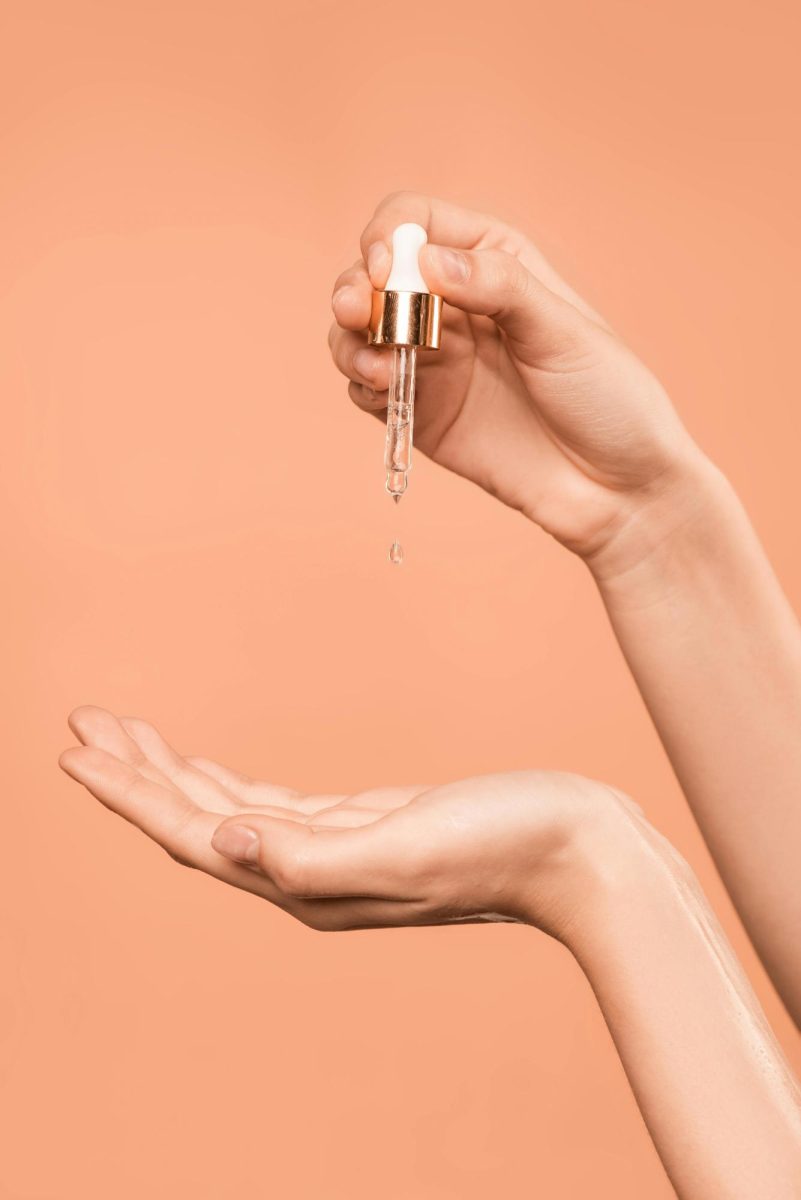Common skin concerns – and affordable solutions!
Pimples, scarring, hyperpigmentation—a few of the most common skin concerns that Dublin High students requested that I talk about in a poll on Instagram. It can be frustrating to deal with these problems—especially if they crop up suddenly or refuse to go away despite your most earnest attempts.
So, let’s talk about it. This article details the most common skin concerns amongst teenagers—with causes and easy solutions. Bear in mind that sometimes, the only answer is to see a dermatologist, especially if the concern is causing you pain or impacting your health. The money spent on a dozen failed attempts might be better redirected to a professional evaluation.
Number one – pimples!
Pimples, zits, acne—whatever you wish to call it, you probably have an experience with them. Characterized by a raised white bump surrounded by red, they’re the most common skin concern I was asked about.
While there are several types of pimples, their cause is usually the same: a bit of oil or bacteria gets trapped in a hair follicle and causes infection or inflammation.
The best prevention against pimples is to cleanse daily and thoroughly to wash away acne-causing impurities such as dirt, oil, or bacteria. (Check out this article for more information on how to cleanse properly.) If you have especially oily skin, look into a cleanser with exfoliating ingredients such as salicylic acid, AHAs, or BHAs (you’ll find these abbreviated in this way on ingredient labels). These ingredients help unclog blocked pores and remove dead skin cells, which those with oily skin are especially prone to.
On the other hand, if you’ve got a pimple, you can wait it out, stick a pimple patch on it (check out those by Hero, COSRX, or Alba!), or try putting honey or benzoyl peroxide on it. Whatever you do, don’t pop the pimple or pick at it, or you’ll be dealing with our next concern: scarring.
Number two – acne scars!
Scarring—as if the pimple itself wasn’t enough, now you’re dealing with damaged scar tissue that might not go away. Characterized by enduring red, dark discoloration or a pitted crater in place of the former pimple, acne scarring may leave those affected self-conscious and frustrated. Thankfully, however, acne scars can fade or even disappear entirely with time.
To avoid scarring altogether, avoid touching the pimple and treating it as soon as possible; most scarring is caused by severe acne or pimples that were picked or popped. If the scarring has already taken place, however, the situation could be more problematic.
Scarring is more difficult to treat than pimples. While superficial scarring might quickly go away on its own, deeper scarring may be more complicated to treat, and, even then, both can oftentimes only be treated using certain products to accelerate the healing process.
More specifically, the solution is to promote cell turnover (or, the rate at which healthy cells emerge and replace dead, damaged ones) to speed up the fading process, in which case retinols and retinoids are your friend. Retinoids are a class of Vitamin A that stimulate cell proliferation (which is why they’re common in anti-aging products, but also work for scarring).
If you’ve never tried them before, use a retinol serum or moisturizer once a week and work up to use daily or every other day. If that doesn’t work, look into a stronger ingredient such as adapalene or tretinoin. Also, only apply these at night, and wear SPF during the day.
Note that retinols or retinoids can cause mild, temporary acne flares called “purging,” which results from the clogged bacteria in your skin rapidly being pushed to the surface. While this is a typical part of starting retinols or retinoids, discontinue use if purging persists or gets measurably worse.
Common retinol products include serums by CeraVe or TheOrdinary, while Olay has a solid retinol moisturizer.
If a retinoid doesn’t work, you may need to explore professionally-done procedures such as microneedling, chemical peels, or laser resurfacing. Talk to an esthetician or dermatologist for your options.
Number three – hyperpigmentation!
Hyperpigmentation, or discoloration, is a fancy way of saying “one patch of my skin isn’t the same color as the rest.” Most commonly, it happens after a pimple fades away, in which case it is known as post-inflammatory hyperpigmentation (PIH). It’s distinct from scarring in that it isn’t textured and can (fortunately) be treated more easily.
Commonly, areas of hyperpigmentation are red or dark and caused by an excess production of melanin, which itself can be caused by acne, age, hormonal changes, or sun exposure. While some causes might require a medical consultation, you can start with store-bought solutions.
There are several active ingredients that might get you favorable results, so I’ll quickly rattle them off.
Vitamin C serums, which, as an antioxidant, neutralize free radicals, can reduce excess melanin production. The strongest form of topical Vitamin C is ascorbic acid (the name you’ll see on ingredient labels). Popular brands with ascorbic acid-based serums include Melano CC, TheOrdinary, CeraVe, Loreal Paris, and Mad Hippie.
Likewise, alpha arbutin serums can suppress melanin activity in skin cells. Popular brands for this ingredient include TheOrdinary, Beauty of Joseon, and The INKEY List.
Finally, Niacinimide serums can also suppress melanin activity in skin cells (and reduce oil production!). Look into TheOrdinary, Beauty of Joseon, or Cerave’s cleansers with niacinimide. I’ll caution that some people (including myself) can have negative reactions to niacinimide such as flushing and breakouts.
Phew. That was a lot. But these are three of the most common skin concerns that Dublin High students struggle with, so try out these recommendations and, with a little bit of luck, they’ll go away.
Again, if they don’t, reach out to a dermatologist and follow their solutions!
Once again, feel free to reach out to me on Instagram @austinmengg with specific questions (or if you have a concern I didn’t cover!), but bear in mind that I am not yet a dermatologist.
Image caption: Pictures of my own skin in December and February, using adapalene and Vitamin C. Featuring scarring, pimples, and discoloration!




































